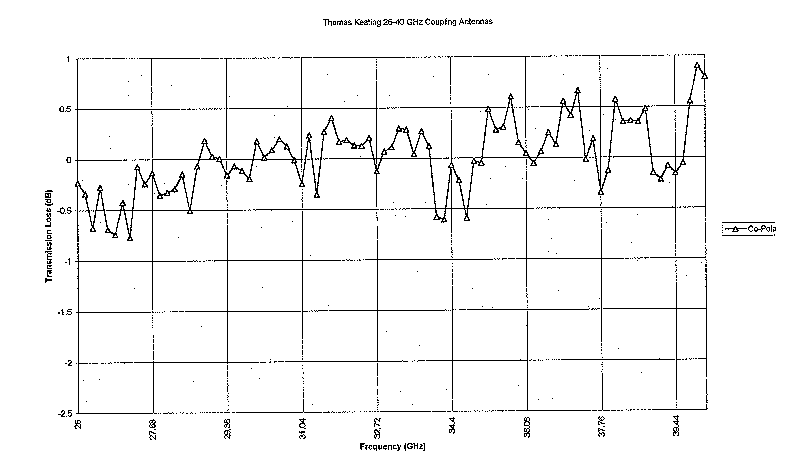We design and built lots of bespoke antenna - mainly in the mm-wave region, though we do go down to 2 GHz from time-to-time.
For example, using the design skills of Dr Soe Min Tun, we recently designed, manufactured and had tested by David Gentle at the NPL Antenna range a set of ultra-low (Less than 46dBi) cross-polar high and low W and V band antennas to feed and test an antenna range for a customer of TAS in Cannes
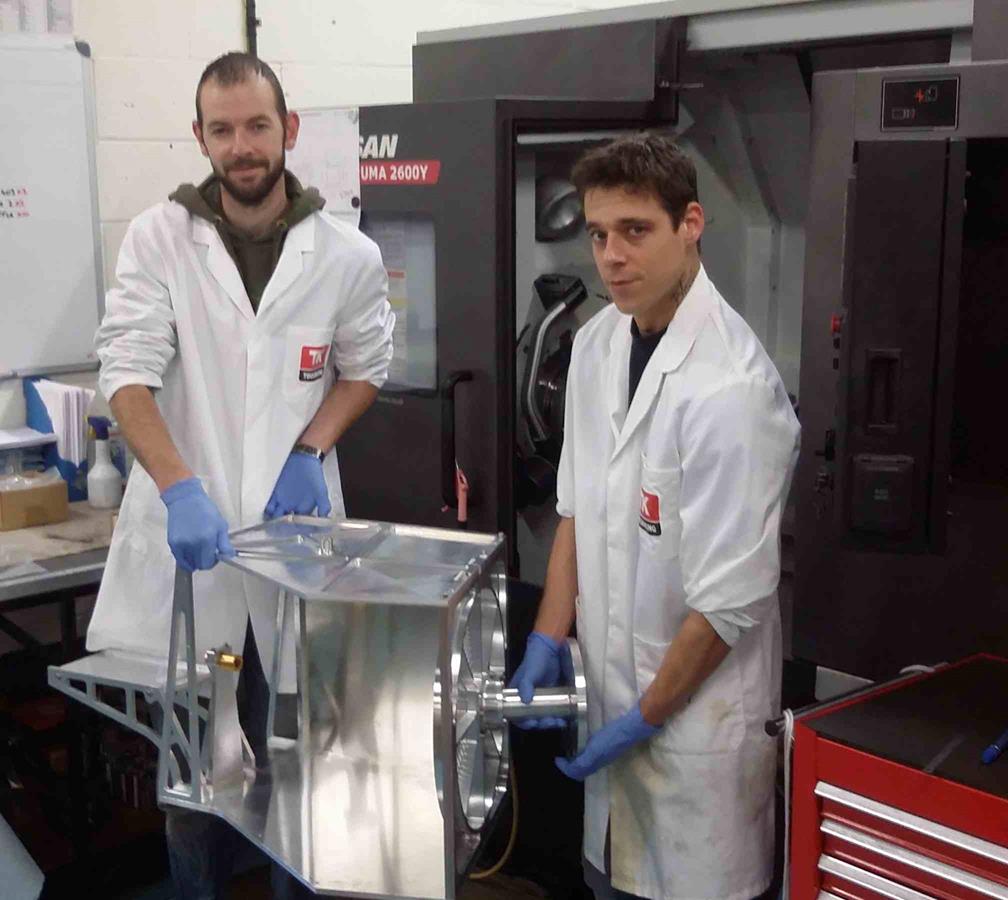
W-band high gains being prepared for shipping .... and it is well protected box below:
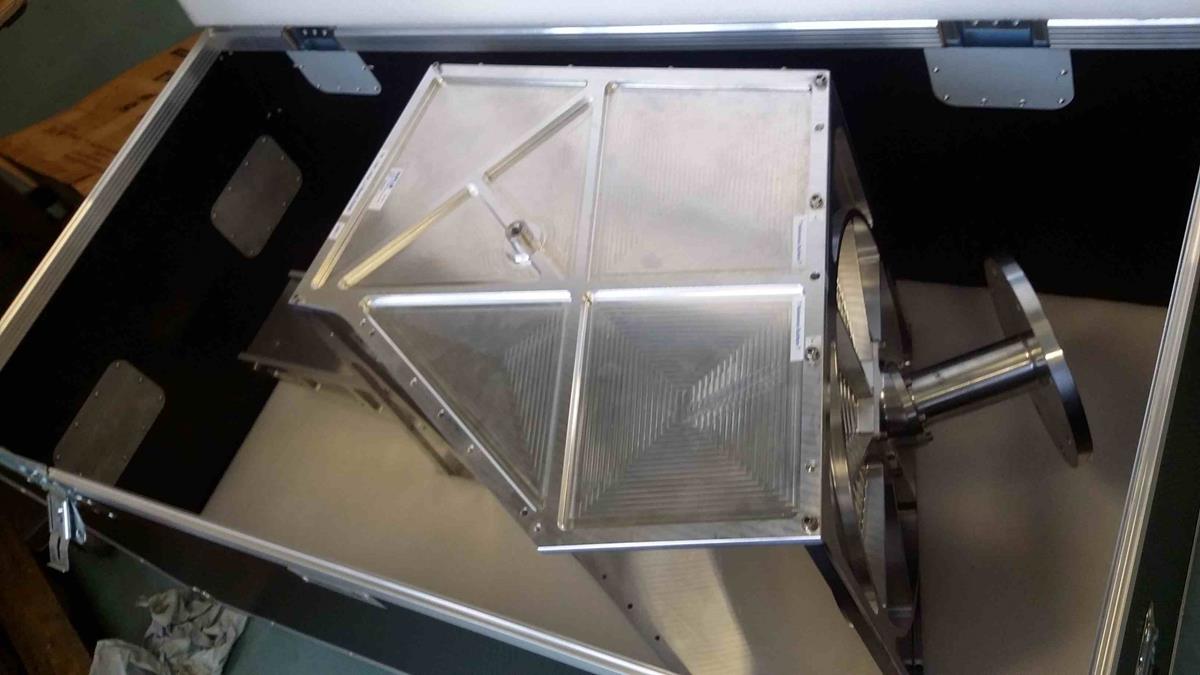
The tolerance to reach the -47dB cross-polar levels for the low gain antennas was particularly challanging.... making full use of TK Ram
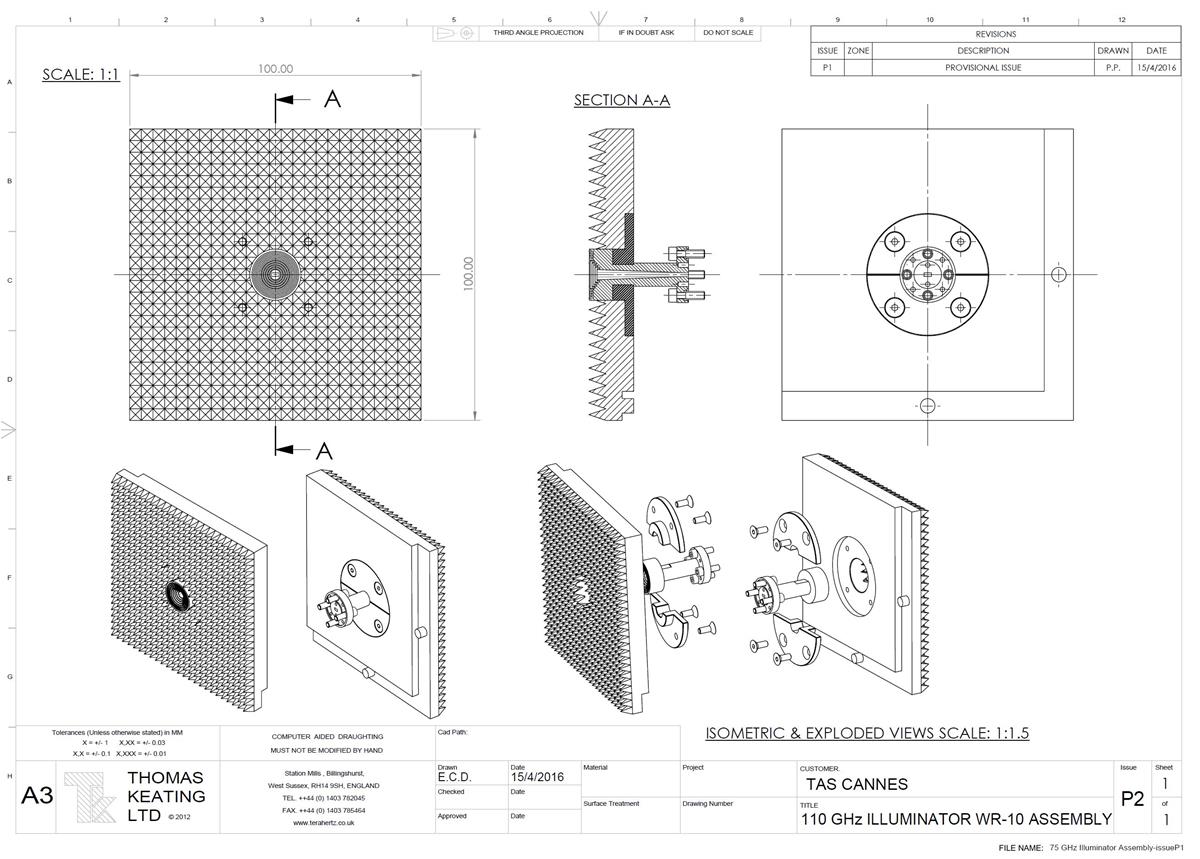
More technical details can be found in a detailed technical note and NPL Measurements. A snippet from the NPL report which show how well one of the low gain antennas performed can be seen below - on boresite X-polar was below 50dBi
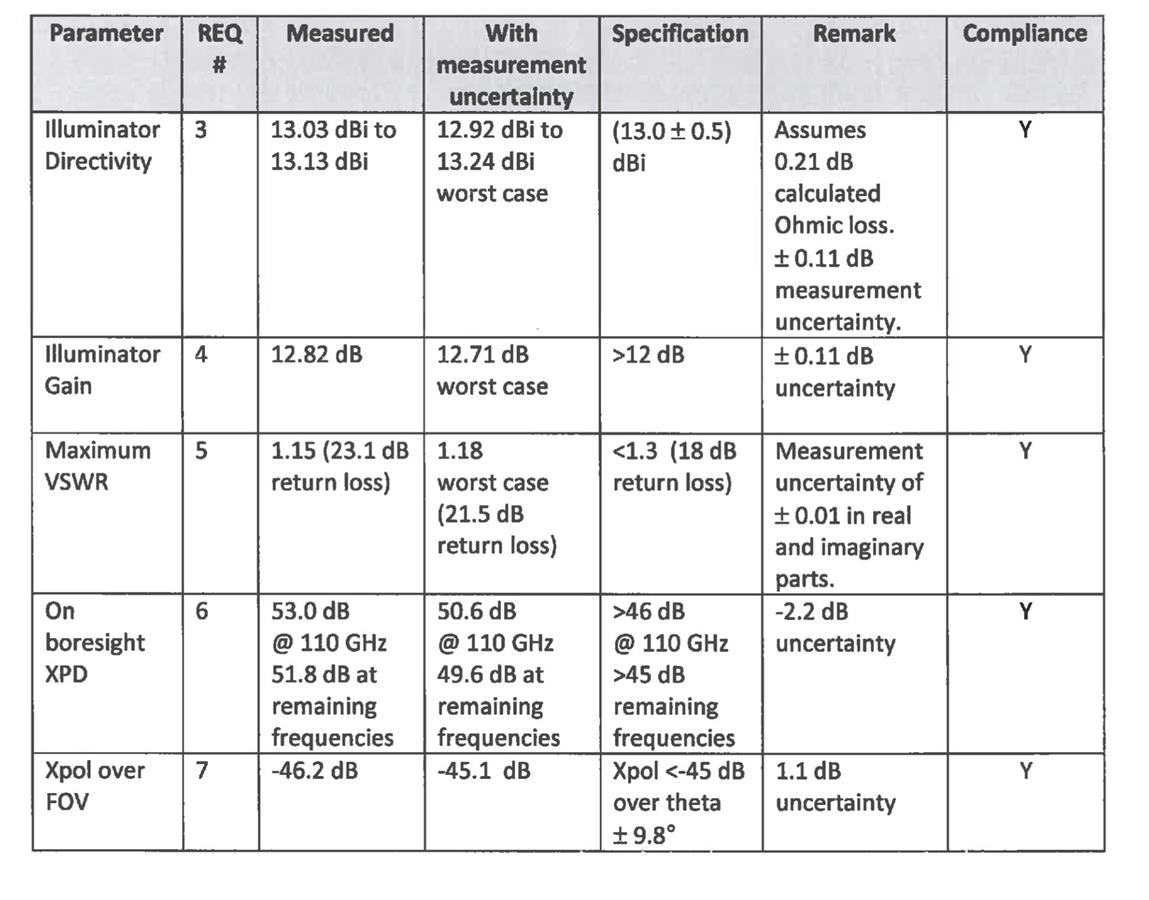
Of course, our antenna activities in antennas are not new...
Over the last three decades, TK developed a whole range of Antennas for applications in Short range TV distribution, Plasma Fusion Diagnostics and Remote Sensing. Here are some images of a 140 GHz antenna built for Dr.Alessandro Simonetto of the Istituto di Fisica del Plasma in Milan, Italy. This is designed to simulate the HE11 beam generated from a corrugated guide transporting MWatts of power from Gryotrons to the Frascati Tokomak.
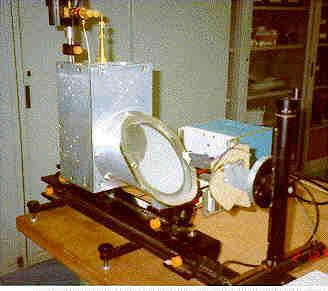
Here the field produced by the antenna is being probed in the nearfield to check that the pattern is correct. Measured 1/e amplitude beamwidth was within 3% of the designed value.
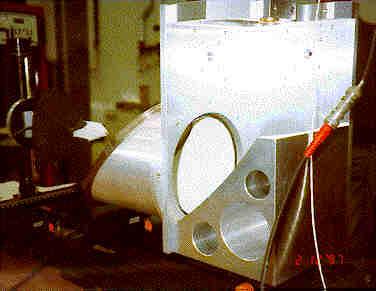
Here Antonio Caltalfamo, our Italian agent looks on as the tests proceed.
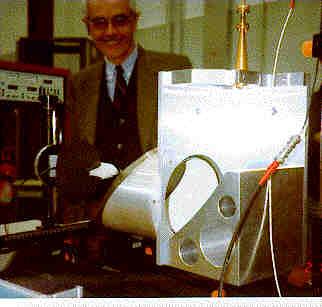
To insure that no cross-polar siganal could escape from the Antenna when acting as a transmitter a large polarizing grid was placed in the output beam.
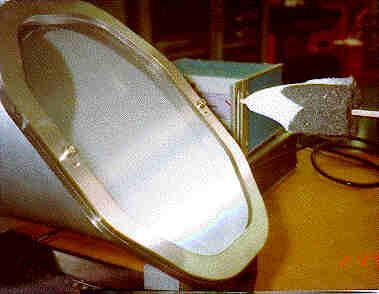
Gaussian Optics Lens antennas
We make GOLA antennas to order, feeding bloomed lenses with corrugated horns.
Antennas for accurate materials measurements
TK develops antennas for materials measurements: Here is an example of a 28 to 40 GHz materials measurement range with two corrugated horn/off-axis mirror antennas used to couple power with very low loss for a UK based research establishment
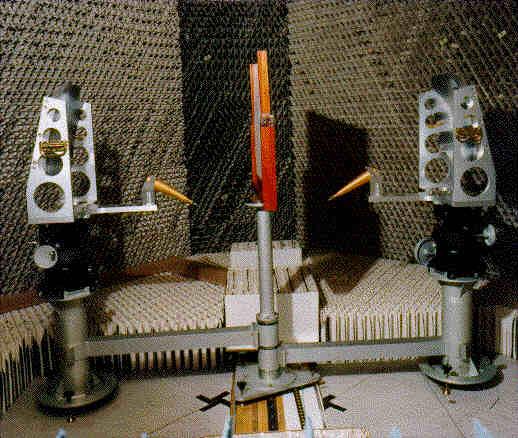
The antennas are placed in a RAM covered anechoic chamber to minimise reflections and standing waves. Here is a close-up on one of the antennas
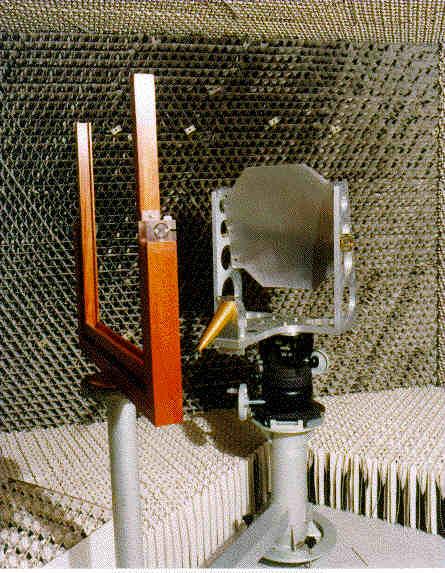
These loss measurements, taken with a network analyser for both co-polar and X-polar signals show how effective the antenna is at coupling power across the sample space.
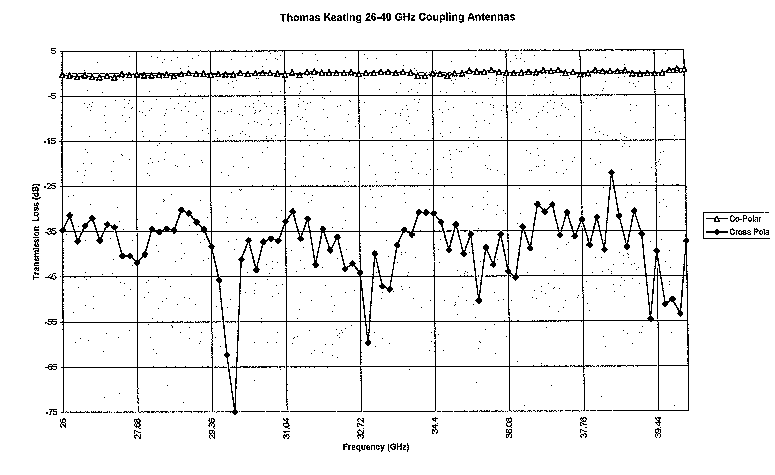
Loss is very low, and (nodoubt due to small calibration errors) actually negative in places:
